One Course, Three Platforms: How a Popular Programming MOOC Differs on Coursera, edX, and FutureLearn
Let’s compare the popular course Programming for Everybody on Coursera, edX, and FutureLearn.
When a MOOC is offered on several platforms, how does each version differ? For instance, the popular course Programming for Everybody, taught by Dr. Charles Severance from the University of Michigan, is offered on Coursera, edX, and FutureLearn.
I had previously taken the course on Coursera, but for a full comparison, I signed up for a certificate on each platform. Here’s a summary of the differences:
| Coursera | edX | FutureLearn | |
| Length | 7 weeks | 6 weeks | 6 weeks |
| Cost | $49 per month | $49 (one-time fee) | $74 (one-time fee) |
| Ease of Use | Okay | Cumbersome | Best |
| Forums | Cumbersome | Cumbersome | Best |
| Mentor Activity | High | Low | High |
| Behind Paywall | Quizzes, coding tests | Quizzes, coding tests | Quizzes |
Schedule
On edX and FutureLearn, the course starts with a one-week introduction. On Coursera, that introduction is covered in two weeks and includes an extra (optional) assignment. As a result, the course is six weeks long on edX and FutureLearn, but seven weeks on Coursera.
On all three platforms, you can enroll at any time. On edX, the course is fully self-paced. On Coursera and FutureLearn, it includes a start date and deadlines, but they are only suggested. Note, however, that on FutureLearn, mentors may not stick around after the course ends.
Cost
Access to videos, forums, and readings is free on all three, but assessments and certificates are not. Here’s a breakdown of the courses’ cost:
| Free Trial | Full Access & Certificate | |
| Coursera | 7 days | $49 per month |
| edX | 1 to 2 months | $49 (one-time fee) |
| FutureLearn | 8 weeks | $74 (one-time fee) |
The course is also available via the annual subscriptions FutureLearn Unlimited and Coursera Plus, which respectively cost $249 and $399 per year.
Interface Design
Comparing the same course on different platforms emphasized the learning experience of each provider and helped me pinpoint what I like and dislike in each.
On Coursera, the left navigation sidebar lists each week’s worth of course material, allowing you to keep track of your progress. On FutureLearn, a To Do page serves the same purpose. Both also include video durations, allowing learners to estimate the remaining course load.
By contrast, edX’s interface offers much less visibility into your progress. Each week’s work is divided into sections and each section into pages. You can’t tell at a glance how many pages are left to complete a section nor how many sections are left to complete the week.
Taking this course reminded me why I prefer Coursera and FutureLearn over the edX format.
Video Lessons
The main videos — the ones focused on programming — were the same on all platforms. But the bonus videos, such as interviews with industry actors, sometimes differed. For instance, on edX, the course included an interview with Anant Agarwal, edX founder and CEO.
Textbook
On all platforms, the course includes free access to the textbook Python for Everybody: Exploring Data in Python 3, by Dr. Severance. The PDF is available in several languages.
Assessments
On all three platforms, the course includes the same assessments: five ten-question quizzes, and several coding assignments. There’s one exception: on Coursera, week 2 includes an extra peer-reviewed assignment that helps you set up a local coding environment. But the assignment is optional: a Python Playground is available to run your code in the browser.
On Coursera and edX, both quizzes and coding assignments count toward your final score. On FutureLearn, only the quizzes do: the coding assignments are available but don’t count, so you may pass the course without writing any code.
On Coursera and edX, learners may attempt quizzes and assignments as many times as they want. On FutureLearn, you lose a mark for every wrong quiz answer and only have three tries per question.
On Coursera and edX, you need a final score of at least 80% to earn a certificate. On FutureLearn, you need 70%.
Discussions
FutureLearn makes discussions a central part of each course. Each course page includes a discussion section, shortening the distance between material and questions. And this seems to work: there were many participants and a very knowledgeable mentor — Hi, Stephen!
On Coursera and edX, discussions were relegated to a separate tab. EdX, in particular, suffered from little activity and mentor involvement.
Certificate
Finally, the three platforms offer an ID-verified certificate that requires scanning a proof of identity (for instance, an ID card) and taking a picture using a webcam.
The three certificates are similar. The only significant difference is that the one from FutureLearn includes a second page with hours of study, learning outcomes, syllabus, and final course score. The others don’t.
Here’s how the three certificates look:
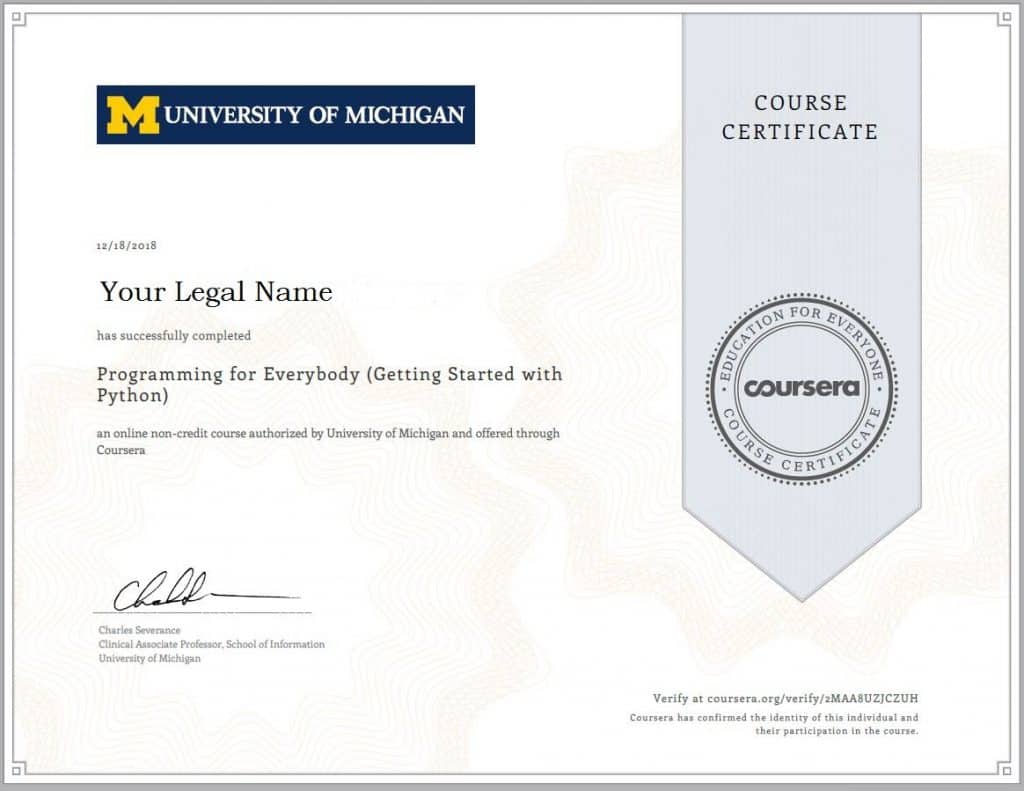
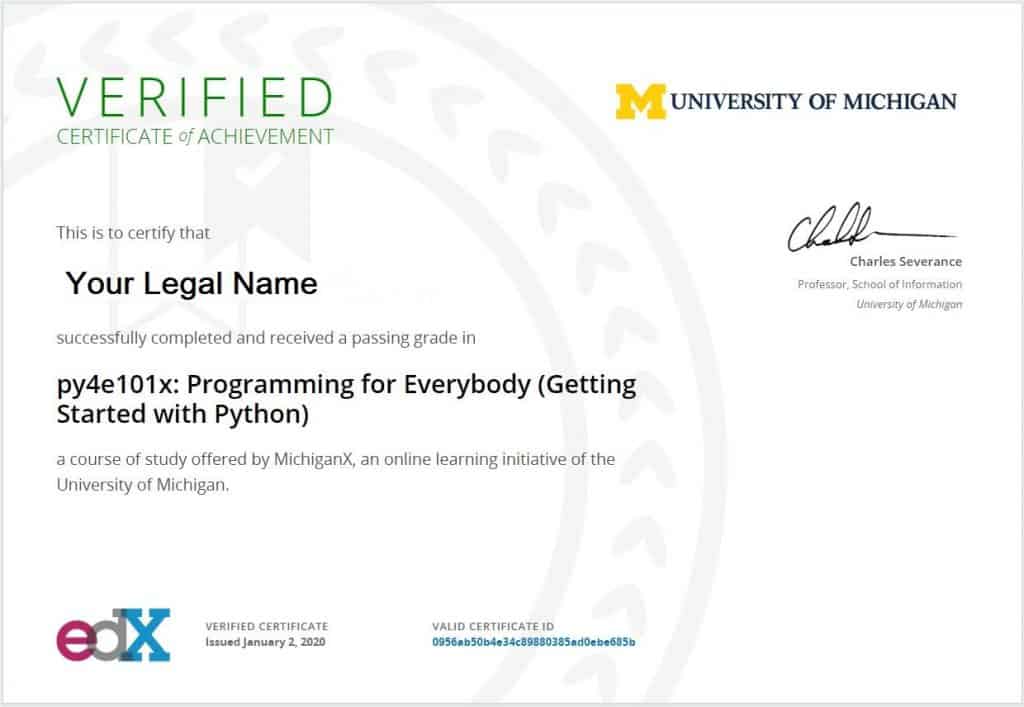
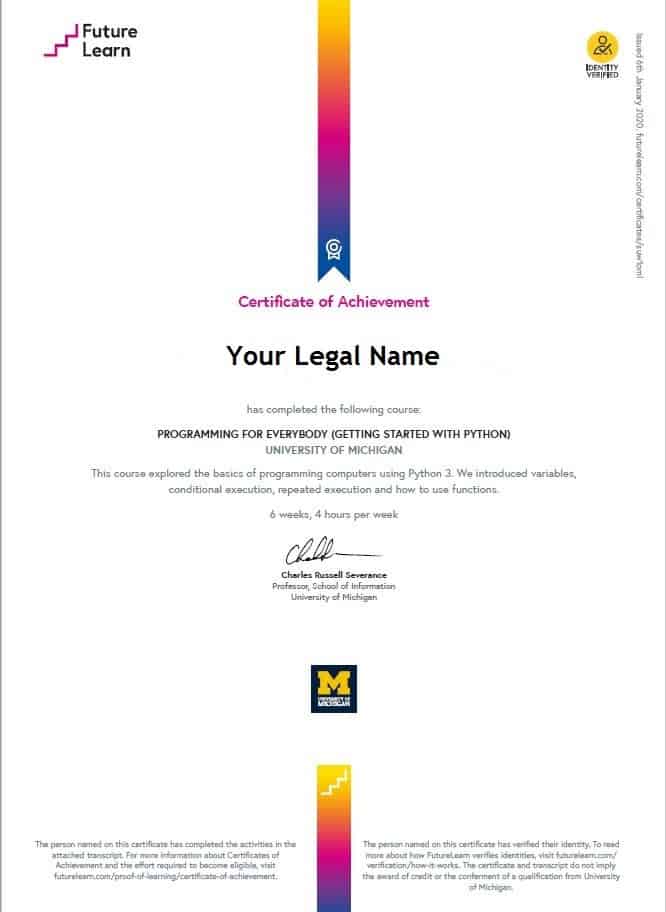
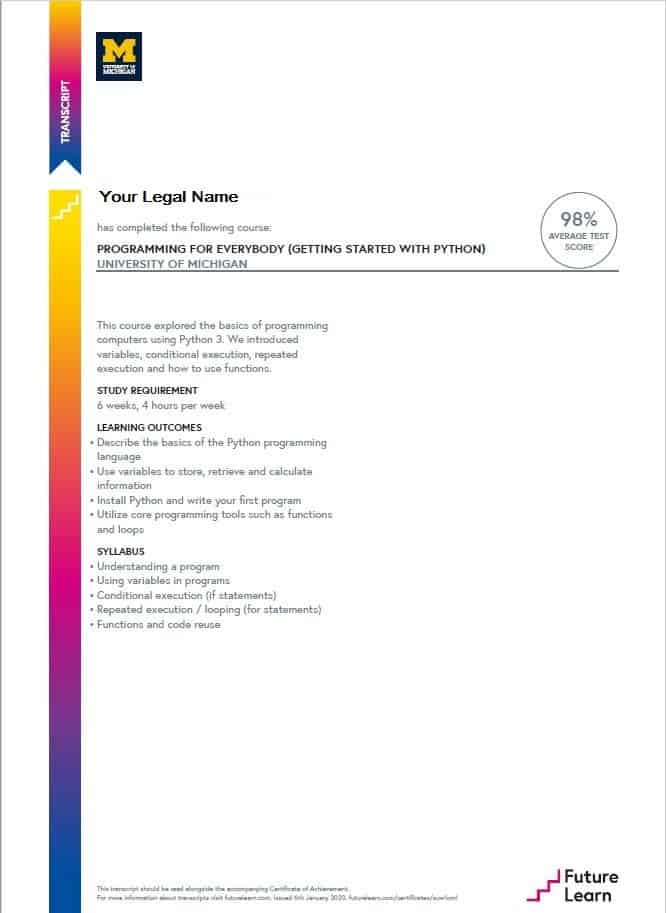
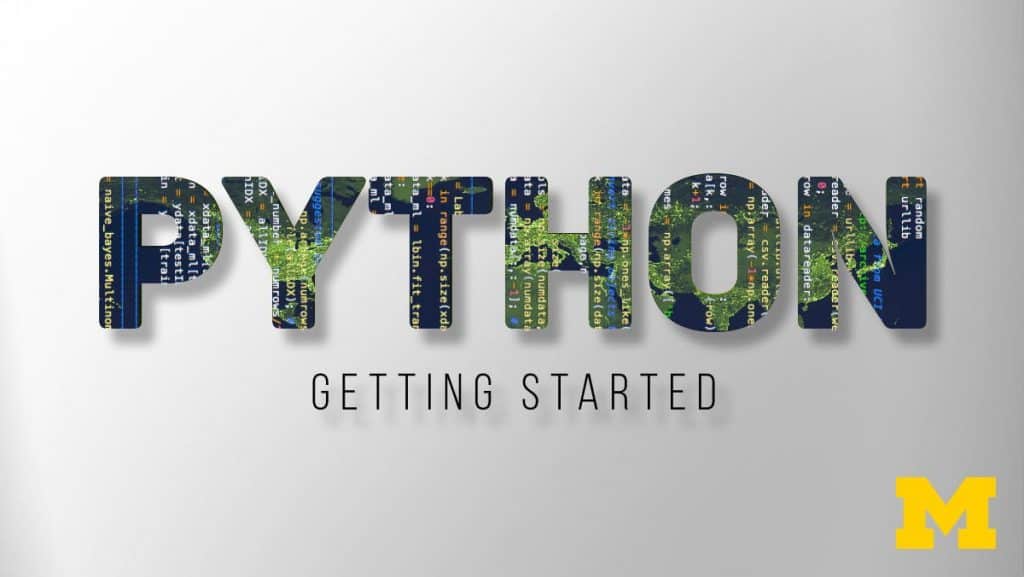






Philip Sagstetter
This was a fabulous review of Coursera, EdX, and FutureLearn, regarding the same Python course.
I am an old retired guy, and a software developer for 27 years.
I am looking at interesting MOOC courses to take for my general interest.
This comparison was very helpful to me, and I really appreciate it.
Thanks for such a great comparison.
Jim
Wow Pat, I bet you can become a mentor after completing the same course three times! I’m impressed by your enthusiasm in learning not only the content but also the experience of learning itself. By the way, auditors should note that Coursera would at least display ungraded assessments that are completely inaccessible behind edX’s paywall.
Comparing these platforms, you didn’t like Coursera’s ease of use but you preferred its interface design. Since you don’t consider interface design to be important in “ease of use”, how do you define the latter? Please elaborate on why you felt FutureLearn’s ease of use is best.
As you noted, Coursera integrates a Python playground. Coursera’s discussions also support the playground, which makes it easier to refer to line numbers when discussing pasted code. I don’t know about the other platforms, on which I have yet to try a programming course.
P.S. since you found little activity in Coursera’s discussions, I’m unsure whether you’re aware that less activity is displayed when browsing via their mobile app.